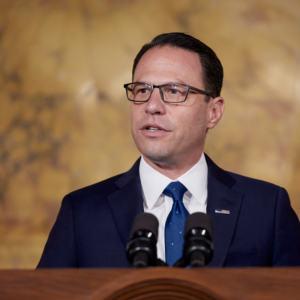As Pennsylvania Governor Josh Shapiro signed a $47.6 billion budget into law last week, he called it a “major victory” for bipartisanship and determination.
But fiscal hawks say the real victory goes to government spending, and the losers are Pennsylvania taxpayers. They argue that a post-COVID era that’s seen massive spending is being capped off, not with fiscal restraint, but a nearly 5 percent spending increase over last year.
State Senate and House leaders regularly used the word “productive” to describe negotiations. Pennsylvania is the only state with a divided legislature: Republicans control the Senate while Democrats control the House. It was a much different feel from last year when Shapiro gave in to House Democrat demands and vetoed a school voucher plan. A budget was eventually finalized in August.
Fiscal hawks found this year’s budget lacking – specifically the 4.9 percent increase in spending from last year.
Critics believe there were a lot of missed opportunities for reform. Elizabeth Stelle with the Commonwealth Foundation castigated Senate Republicans for ceding ground to the whims of Shapiro and House Democrats.
What’s most concerning is that Pennsylvania regularly spends more money than it brings in from taxes.
Pennsylvania’s Independent Fiscal Office (IFO) said this month the state brought in $45.47 billion in tax revenue last year. That left a more than $2 billion budget deficit. The state used federal taxpayer dollars doled out during the COVID pandemic to fill the hole.
That money won’t last much longer. The IFO said in February the state could not have money by 2026. Critics believe Pennsylvania will have to pass tax increases to cover any additional spending.
“To be successful in the future, we need to limit how much we spend and how we spend it,” said Rep. Craig Staats (R-Bucks).
The budget’s biggest expense was education. The state will spend $1.11 billion more on K-12 education this year compared to last year. Shapiro and Democrats have said a new education formula distributes funding more equitably to school districts.
Opponents believe the extra money traps students in failing schools. They note Pennsylvania spent a record $22,000 per-pupil during this past school year.
While funding for the Educational Improvement Tax Credit Program increased by $75 million, school vouchers failed to be included in the budget for a second year. That was despite a major push by school choice advocates on both sides of the aisle, including rap mogul Jay-Z. A report from Children’s Scholarship Fund Philadelphia said students who are moved from public schools to private schools do better on standardized testing than those who stay at public schools.
One Shapiro priority that failed to pass was his carbon cap-and-trade program. Sources told DVJournal last month the Pennsylvania Climate Emissions Reduction Act (PACER) was dead.
Shapiro proposed it as a way to avoid putting the state in the Regional Greenhouse Gas Initiative (RGGI) multi-state compact. Former Gov. Tom Wolf (D) unilaterally entered the Keystone State into RGGI in 2022. The Commonwealth Court threw out the ruling last fall.
The PACER plan was long opposed by energy groups who said that it was nothing more than a tax that would stifle development.
One energy plan that did make it through the legislature was a policy on carbon capture and sequestration. Sen. Gene Yaw (R-Bradford) said Senate Bill 831 is a pragmatic solution to help the Pennsylvania economy. It would allow companies to store carbon dioxide that’s removed from emissions underground believed to be up to 2.4 billion metric tons.
Shapiro still needs to sign the bill.
For now, it’s mostly all smiles at the Pennsylvania Capitol with Shapiro, House Democrats, and Senate Republicans claiming victory.
But Stelle said not to believe the rhetoric. “This just seems wholly insufficient to make any dent into the governor’s promise to make Pennsylvania competitive.”
How much credit does Shapiro deserve? That’s up for debate.
A month ago, Senate Majority Leader Joe Pittman (R-Indiana) said he had been engaged with Shapiro but believed “more of a kick in the pants” was needed. House Democrats said there were ongoing talks with Shapiro. Shapiro said late last month the talks had been productive and honest.
However, Stelle told DVJournal the governor stayed on the sideline instead of leading. “He sort of just left the House and the Senate to figure out proposals.”
Most of the budget negotiations were behind closed doors. That means it’s not known how involved Shapiro himself was in talks.

